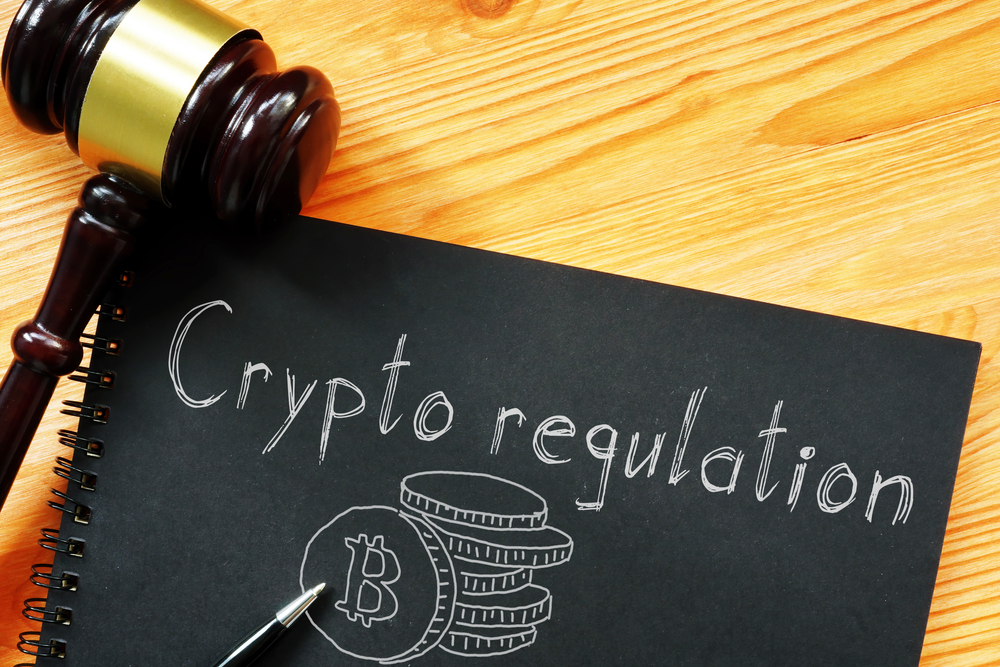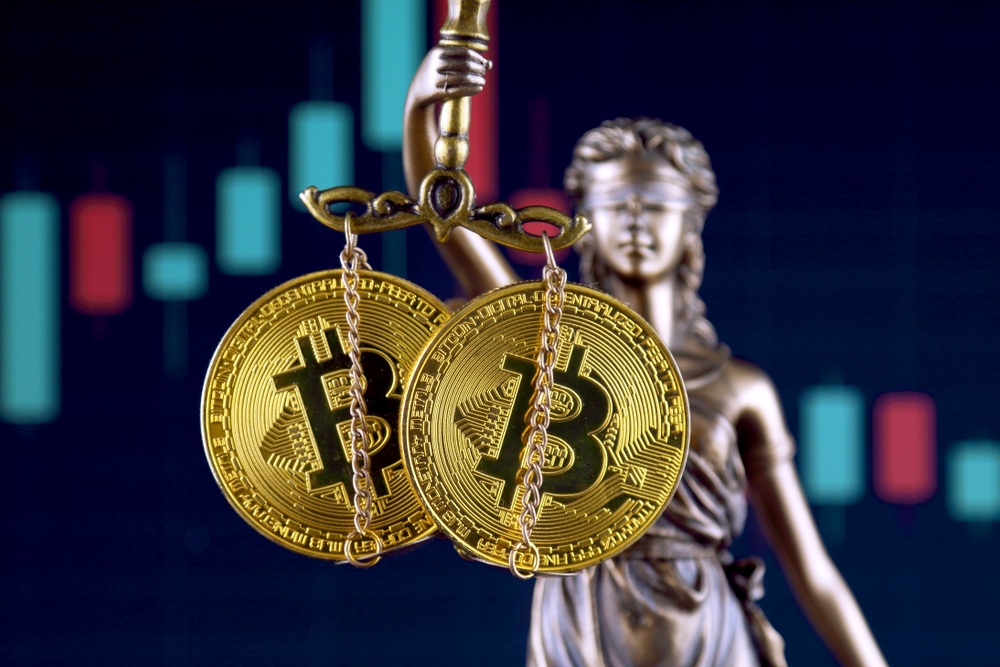Crypto Regulations Impact

Ever wondered how regulations will shape the world of cryptocurrency? As the crypto market continues its rapid expansion, understanding the impacts of regulation becomes essential. On one hand, the decentralized nature of crypto is part of its charm, yet without oversight, this freedom also brings market volatility, investor protection risks, and transparency issues. Imagine huge price swings triggered by mere tweets, investors losing fortunes to scams, or the murky waters of misinformation and market manipulation. Addressing these pain points through regulation could mean more stability, better protection, and clearer information for investors like us. Let’s explore why this matters and what it could mean for the future.
The Problem with Unregulated Crypto

The appeal of cryptocurrency often lies in its decentralized nature, but that freedom comes with significant challenges. The lack of regulation in the cryptocurrency market has several critical implications:
Market Volatility
One of the most prominent issues is market volatility. Without regulatory oversight, cryptocurrency prices can swing wildly, driven by speculation and market sentiment. For example, a tweet by a high-profile individual can send prices soaring or plummeting within hours. This creates a highly unpredictable environment, making it tough for investors to make informed decisions.
Investor Protection Risks
Another major concern is investor protection. In a market without regulation, safeguards against fraud, scams, and hacks are minimal. Consider the numerous initial coin offerings (ICOs) that have vanished with investors’ money or exchanges that have been hacked, costing users millions. Without a regulatory framework, there are few avenues for recourse or recovery for affected investors.
Transparency Issues
Transparency is another area where unregulated markets fall short. The anonymity and lack of oversight can lead to misinformation and market manipulation. For instance, a project can inflate its value through fake news or insider trading, leaving investors in the dark about the true state of their investments. The absence of clear, accurate information makes it challenging to assess the legitimacy and potential of various crypto assets.
These are just a few of the problems caused by an unregulated crypto market. But what if there were rules in place to address these issues? We’ll look into that next, exploring the potential benefits of crypto regulations. Could they bring stability, protection, and transparency to the market? Stay tuned to find out more.
Benefits of Crypto Regulation

Have you ever wondered what the crypto world would look like with more regulation? While the idea of more rules may not sound appealing at first, there are some significant upsides to having a regulated crypto market. Let’s break it down.
Enhanced Market Efficiency
Did you know that research has shown regulated markets tend to be more efficient? This isn’t just a hypothesis. According to a study published by UF News, regulation can lead to more stable prices and better liquidity. Essentially, when there are clear rules, everyone knows what to expect, which can help reduce some of the chaos we’re all too familiar with.
Investor Protection
One of the most significant benefits of regulation is the protection it offers to investors. Think about it: having clear guidelines and oversight could mean fewer scams and fraudulent schemes. Regulation ensures that companies provide reliable, public information, which means you can make more informed decisions. Imagine a world where you can invest with greater peace of mind, knowing there are safeguards in place to protect your hard-earned money.
Improved Market Transparency
Transparency is essential for building trust, and this is where regulation really shines. By enforcing rules that require disclosures and regular auditing, regulations help ensure that markets operate openly and honestly. This helps prevent misinformation and market manipulation. When things are transparent, everyone benefits—from newbies to seasoned investors.
“Without regulation, you’re simply trying to navigate through a dark room without a flashlight.” – Anonymous Crypto Enthusiast
These benefits make a compelling case for why some level of regulation might be good for the crypto market. But, as with anything, there are two sides to every coin. What about the potential downsides of bringing regulations into the mix? How might this new level of oversight affect the wild, innovative spirit we’ve come to love in the crypto world? Stay tuned, because we’re about to explore what could go wrong with crypto regulations in the next section.
Downsides of Crypto Regulation

Regulatory Risks
While regulation aims to more stability, it can also bring about risks that we need to be aware of. A sudden change in regulatory policy can shock the market, causing prices to fluctuate wildly. Imagine waking up to find out that your favorite cryptocurrency has crashed due to a new government rule. It’s like playing a game where the rules can change overnight, leaving investors in a state of uncertainty.
“The only certainty is uncertainty.”
Compliance Costs
Another downside of regulation is the high cost of compliance. Cryptocurrency projects often need to spend significant resources to meet regulatory requirements. This means more money and time spent on legal and administrative work, which could otherwise go into innovation and development.
- Legal fees and paperwork: Dealing with regulations means hiring legal experts to ensure everything is in line.
- Ongoing monitoring: Companies must continuously monitor compliance, requiring dedicated teams and tools.
- Potential fines: Missing out on compliance can lead to hefty fines, draining project funds.
These costs can be pretty burdensome, especially for smaller startups that are already working on tight budgets.
Innovation Stifle
One of the biggest fears in the crypto community is that heavy regulations might stifle innovation. Cryptocurrency thrives on the idea of decentralization and freedom from traditional financial systems. However, strict regulations could put barriers in the way of creative and groundbreaking projects. Think about how some of the most innovative ideas in the crypto space emerged from a lack of constraints. By tightening the reins, we might miss out on the next big thing.
Regulations can sometimes be a double-edged sword. They aim to bring order but have the potential to hinder the very essence of what makes crypto exciting and revolutionary.
Have you ever wondered how different regions approach crypto regulation? Stay tuned as we explore the various regulatory landscapes worldwide and uncover what this means for the future of cryptocurrencies.
Types of Regulatory Approaches

When it comes to cryptocurrency regulation, the landscape varies significantly depending on the country. Some nations embrace it with open arms, while others tread cautiously or outright ban it. Whether you’re an investor or just curious, let’s explore how different regions handle crypto regulation.
United States
In the United States, the regulatory scene is dominated by the SEC (Securities and Exchange Commission). Recently, the SEC has been cracking down on fraudulent ICOs and ensuring that exchanges comply with existing financial laws. Their aim is to protect investors while still allowing innovation to flourish. One significant move by the SEC is their increasing scrutiny of decentralized finance (DeFi) platforms, which has had a massive impact on market behavior.
“Regulation brings clarity, but also challenges. It’s a double-edged sword.” – an investor sentiment from a recent survey by CoinDesk.
Europe and the UK
Europe and the UK have carved out a relatively balanced approach. The EU’s MiCA (Markets in Crypto-assets) regulation is a comprehensive framework that aims to safeguard investors and bring uniformity across member states. This regulation has been praised for its clarity but criticized for potentially stifling smaller projects due to compliance costs. The UK’s Financial Conduct Authority (FCA) has also been proactive, often clamping down on crypto ads and warning investors about the risks involved.
According to a study by the Financial Times, these regulations have significantly increased market trust but have also led to an exodus of smaller crypto firms to more lenient jurisdictions.
Other Regions
The approach in Asia and other emerging markets is a mixed bag. Japan has a highly regulated environment that coexists with a thriving crypto industry. This country requires exchanges to be registered and adhere to strict laws, which has helped in creating a trustworthy market. In contrast, China has opted for stricter measures, outright banning cryptocurrencies while exploring its own digital yuan.
On the other hand, places like Singapore and Hong Kong are becoming crypto-friendly hubs by offering clear and supportive regulations. They aim to attract international blockchain companies while ensuring investor protection.
So, why do regulatory environments differ so much, and what can we expect in the future? Stay tuned as we dive into future trends in crypto regulations globally in the next section!
Future of Crypto Regulations

Have you ever wondered what the future holds for crypto regulations? It’s a topic that’s on everyone’s mind. With new developments popping up every other week, it’s crucial to stay ahead of the game. Let’s explore some intriguing trends that may shape the world of cryptocurrency regulation in the coming years.
Increasing Global Cooperation
Countries around the world are starting to realize that going it alone in the regulatory space might not be the best approach. We’re seeing more global cooperation aimed at setting common standards for crypto regulation.
For instance, the Financial Action Task Force (FATF) has been spearheading efforts to create a globally accepted regulatory framework. They’ve introduced guidelines for crypto businesses to follow, aiming to curb issues like money laundering and fraud. The result? A more united front as we tackle the murky waters of crypto regulation together.
“The more we come together, the more we can make crypto a safer space for everyone.” – Industry Expert
Technological Innovations in Regulation
Tech is always evolving, and it’s playing a significant role in shaping the regulatory landscape. Innovations like blockchain analytics tools and AI-powered compliance software are making it easier for regulatory bodies to monitor and enforce rules without stifling innovation.
Imagine using AI to automatically flag suspicious transactions or blockchain to provide transparent and immutable records that regulators can trust. These innovations can make regulatory processes more efficient and less burdensome, paving the way for smoother compliance.
Adaptation of Crypto Projects
As regulations evolve, so too must crypto projects. We’ve already seen some noteworthy adaptations in the industry. Take, for example, the way some DeFi projects are implementing Know Your Customer (KYC) protocols to align with regulatory requirements. These steps make it easier for projects to gain legitimacy and trust while staying compliant.
Another example is the emergence of regulatory-friendly cryptocurrencies designed with compliance baked into their code. These digital assets aim to meet regulatory standards from the get-go, ensuring they can thrive in an increasingly regulated environment.
So, how exactly are these regulations impacting the real-world operations of crypto projects and markets? What can we learn from real-life case studies? Buckle up as we take a closer look in the next section.
Real-World Impact of Regulations

Have you ever wondered how crypto regulations actually play out in the real world? Well, it’s time to remove the guesswork and look at some concrete examples of how regulations have influenced cryptocurrency projects and markets. This isn’t just theory — we’re talking real, tangible impacts.
Case Studies
Case studies can really bring home the effect of regulations on crypto. Take the instance of the ICO boom in 2017 and its subsequent bust. Projects like Filecoin and Tezos started with highly successful Initial Coin Offerings (ICOs), but the lack of clear regulatory guidance caused significant setbacks. Many projects got tangled in legal issues when the SEC started cracking down on unregistered securities. This kind of regulatory action has caused some projects to adapt quickly or face extinction.
Another compelling example is the ban on cryptocurrency trading imposed by the Chinese government. Platforms like Huobi and Binance had to relocate and restructure their operations due to this ban. This move not only shook the market but also forced these companies to innovate and find new ways to serve their user base legally.
Market Reactions
The market is quite sensitive to regulatory announcements. For example, when South Korea announced tighter cryptocurrency regulations back in 2018, the global market experienced a significant drop. Conversely, when more crypto-friendly policies are announced, we often see positive reactions. The introduction of Bitcoin ETFs in Canada provided a boost to Bitcoin prices and increased mainstream acceptance. It’s evident that regulatory news can lead to knee-jerk market reactions, swinging prices up or down.
Investor Behavior
Regulations also shape how investors behave. A study from ScienceDirect showed that regulatory policies can cause market volatility due to shifts in investor sentiment. In highly regulated environments, investors tend to be more cautious and less speculative. On the flip side, the lack of regulation often spurs high-risk, high-return investments driven by greed and the “fear of missing out” or FOMO. A balanced regulatory framework can create a more stable investment climate, reducing extreme fluctuations in investor behavior.
If you’re interested in learning more about how regulations impact the crypto market, check out this article from ScienceDirect.
It’s clear that regulations have a profound effect on the crypto world. But what’s the broader picture? How do these regulatory changes fit into the evolving landscape of digital assets? Stay tuned for the next part, where we’ll put everything into perspective.
Our Take on Crypto Regulations

Balanced Perspective
Cryptocurrency regulations stir up a lot of debates, and it’s easy to see why. On the one hand, regulations bring clarity and structure, which can benefit both markets and investors. They can reduce the wild volatility often seen in unregulated markets, create a safety net for investors, and boost market transparency. Research, like the ScienceDirect Study, supports the view that proper regulatory policies can temper market volatility and cut down on investor greed. This ties directly to enhanced market efficiency and improved investor protection.
On the flip side, heavy-handed or poorly designed regulations can be a downer. They can introduce compliance costs that are tough for smaller projects to shoulder and may stifle the kind of innovation that makes cryptocurrency so exciting. No one wants regulation to be the equivalent of red tape that hinders progress.
Resources Mentioned
For those keen on digging deeper into the impact of crypto regulations, here are some key resources:
Final Thoughts
Whether you love the idea of crypto regulations or hate it, the reality is that they’re a significant part of the cryptocurrency landscape. Keeping up with how regulations are evolving can help us all be better prepared. Understanding both the opportunities and challenges they bring will empower us to navigate this dynamic market intelligently.
Stay informed, stay prepared, and let’s keep exploring the future of cryptocurrency together.
